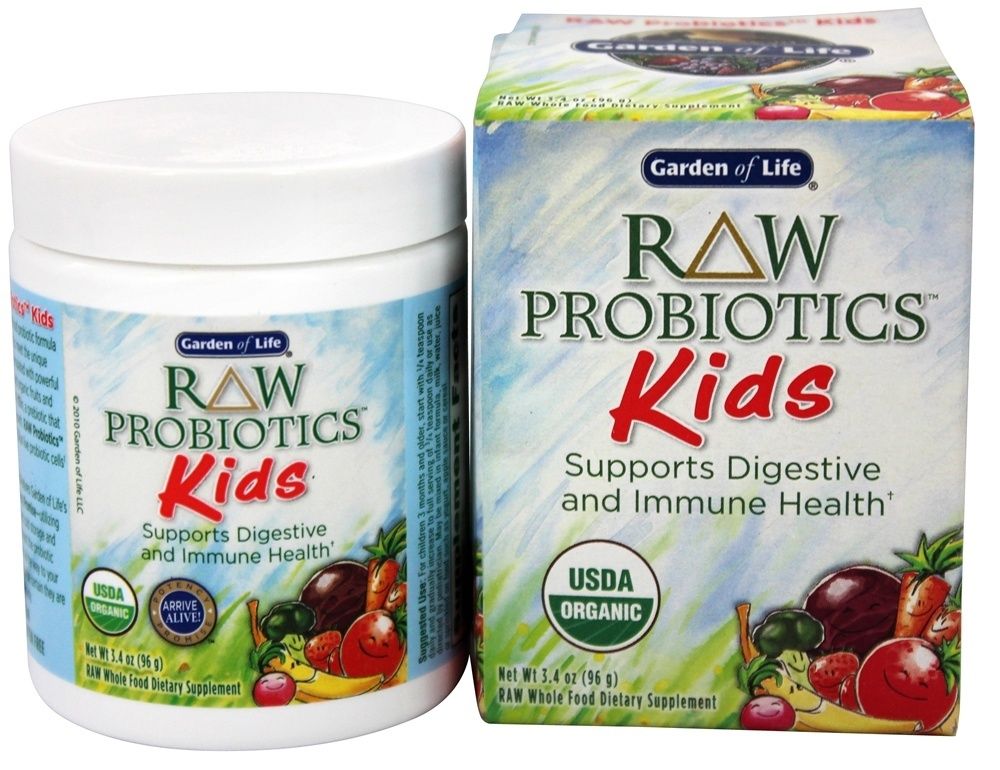Inventing baby food
Inventing Baby Food by Amy Bentley - Paperback
About the Book From Our Blog About the Author Reviews Table of Contents Awards Related Books
About the Book
Food consumption is a significant and complex social activity—and what a society chooses to feed its children reveals much about its tastes and ideas regarding health. In this groundbreaking historical work, Amy Bentley explores how the invention of commercial baby food shaped American notions of infancy and influenced the evolution of parental and pediatric care.
Until the late nineteenth century, infants were almost exclusively fed breast milk. But over the course of a few short decades, Americans began feeding their babies formula and solid foods, frequently as early as a few weeks after birth.
By the 1950s, commercial baby food had become emblematic of all things modern in postwar America. Little jars of baby food were thought to resolve a multitude of problems in the domestic sphere: they reduced parental anxieties about nutrition and health; they made caretakers feel empowered; and they offered women entering the workforce an irresistible convenience. But these baby food products laden with sugar, salt, and starch also became a gateway to the industrialized diet that blossomed during this period.
Today, baby food continues to be shaped by medical, commercial, and parenting trends. Baby food producers now contend with health and nutrition problems as well as the rise of alternative food movements. All of this matters because, as the author suggests, it’s during infancy that American palates become acclimated to tastes and textures, including those of highly processed, minimally nutritious, and calorie-dense industrial food products.
From Our Blog
Food and Power Wins the 2018 ASFS Book AwardWe’re excited to announce that Food and Power: A Culinary Ethnography of Israel by Nir Avieli is the co-winner of the 2018 Association for the Study of Food and Society Book Award! The ASFS Book …
Read More >
About the Author
Amy Bentley is Professor in the Department of Nutrition, Food Studies, and Public Health at New York University. She is the author of Eating for Victory: Food Rationing and the Politics of Domesticity and the editor of A Cultural History of Food in the Modern Era.
She is the author of Eating for Victory: Food Rationing and the Politics of Domesticity and the editor of A Cultural History of Food in the Modern Era.
Reviews
"Bentley, author of Eating for Victory, has meticulously scoured the literature on infant nutrition and presented a very fluid, flowing, and engrossing account of the history of baby food over the past century."—R. A. Hoots CHOICE
"An important testimony to the multifaceted processes that shape why Americans buy what they buy. Inventing Baby Food is a welcome addition to the study of American cultural history."—Journal of American History
"Meticulously researched with sources ranging from company advertisements to industry statistics, Inventing Baby Food makes important contributions to American cultural history and the histories of business, consumerism, and food culture."—Deirdre Clemente Journal of American History
"An exciting contribution to food studies and cultural studies."—Review of Agricultural, Food and Environmental Studies
"Amy Bentley's engaging, brilliantly researched book is a revelation. Who knew that all those little baby food jars could tell us so much about the commercial, cultural, and personal history of food in America. Inventing Baby Food is an instant food studies classic." --Marion Nestle, author of Food Politics
"Food scholars who think infant feeding means burping babies on their mothers' shoulders should think again. Bentley shows how the corporate approach to babies' appetites rested on a shallow conception of babyhood and human taste. She also devotes attention to the changes in the past few decades, as longer breastfeeding and home-prepared foods have gained modest purchase. Her book leaves us better informed, perhaps even a little more optimistc." --Sidney Mintz, William L. Straus Jr. Professor Emeritus, Anthropology, Johns Hopkins
Table of Contents
List of Illustrations
Introduction
1. Industrial Food, Industrial Baby Food: The 1890s to the 1930s
Industrial Food, Industrial Baby Food: The 1890s to the 1930s
2. Shifting Child-Rearing Philosophies and Early Solids: The Golden Age of Baby Food at Midcentury
3. Industrialization, Taste, and Their Discontents: The 1960s to the 1970s
4. Natural Food, Natural Motherhood, and the Turn toward Homemade: The 1970s to the 1990s
5. Reinventing Baby Food in the Twenty-First Century
Acknowledgments
Notes
Bibliography
Index
Awards
- 2015 ASFS Book Prize, Association for the Study of Food and Society
- 2015 Finalist in Reference and Scholarship, James Beard Foundation Awards
Related Books
A History of Cookbooks
Henry Notaker
Breadlines Knee-Deep in Wheat
Janet Poppendieck
How the Other Half Ate
Katherine Leonard Turner
Food in Time and Place
Paul Freedman, Joyce E. Chaplin, Ken Albala
Chaplin, Ken Albala
Meals to Come
Warren Belasco
The Queen of Fats
Susan Allport
Crafting the Culture and History of French Chocolate
Susan J. Terrio
Eating Right in the Renaissance
Ken Albala
The Science of Wine
Jamie Goode
Canned
Anna Zeide
Inventing Baby Food | California Scholarship Online
-
Cite Icon Cite
-
Share
- More
Cite
Bentley, Amy,
Inventing Baby Food
(
Oakland, CA,
2014;
online edn,
California Scholarship Online
, 22 Jan. 2015
2015
), https://doi.org/10.1525/california/9780520277373.001.0001,
accessed 22 Jan. 2023.
Select Format Select format.ris (Mendeley, Papers, Zotero).enw (EndNote).bibtex (BibTex).txt (Medlars, RefWorks)
Close
Navbar Search Filter California Scholarship OnlineInventing Baby FoodUS Cultural HistoryUS History since 1945US Social HistoryUS Cultural HistoryUS History since 1945US Social HistoryBooksJournalsOxford Academic Mobile Microsite Search Term
Close
Navbar Search Filter California Scholarship OnlineInventing Baby FoodUS Cultural HistoryUS History since 1945US Social HistoryUS Cultural HistoryUS History since 1945US Social HistoryBooksJournalsOxford Academic Microsite Search Term
Advanced Search
Abstract
Food consumption is a significant and complex social activity—and what a society chooses to feed its children reveals much about its tastes and ideas regarding health. In this groundbreaking historical work, Amy Bentley explores how the invention of commercial baby food shaped American notions of infancy and influenced the evolution of parental and pediatric care. Until the late nineteenth century, infants were almost exclusively fed breast milk. But over the course of a few short decades, Americans began feeding their babies formula and solid foods, frequently as early as a few weeks after birth. By the 1950s, commercial baby food had become emblematic of all things modern in postwar America. Little jars of baby food were thought to resolve a multitude of problems in the domestic sphere: they reduced parental anxieties about nutrition and health; they made caretakers feel empowered; and they offered women entering the workforce an irresistible convenience. But these baby foods—laden with sugar, salt, and starch—also became a gateway to the industrialized diet that blossomed during this period. Today, baby food continues to be shaped by medical, commercial, and parenting trends.
In this groundbreaking historical work, Amy Bentley explores how the invention of commercial baby food shaped American notions of infancy and influenced the evolution of parental and pediatric care. Until the late nineteenth century, infants were almost exclusively fed breast milk. But over the course of a few short decades, Americans began feeding their babies formula and solid foods, frequently as early as a few weeks after birth. By the 1950s, commercial baby food had become emblematic of all things modern in postwar America. Little jars of baby food were thought to resolve a multitude of problems in the domestic sphere: they reduced parental anxieties about nutrition and health; they made caretakers feel empowered; and they offered women entering the workforce an irresistible convenience. But these baby foods—laden with sugar, salt, and starch—also became a gateway to the industrialized diet that blossomed during this period. Today, baby food continues to be shaped by medical, commercial, and parenting trends. Baby-food producers now contend with health and nutrition problems, as well as the rise of alternative food movements. All of this matters because, as the author suggests, it’s during infancy that the palate becomes acclimated to tastes and textures, including those of highly processed, minimally nutritious, and calorie-dense industrial food products.
Baby-food producers now contend with health and nutrition problems, as well as the rise of alternative food movements. All of this matters because, as the author suggests, it’s during infancy that the palate becomes acclimated to tastes and textures, including those of highly processed, minimally nutritious, and calorie-dense industrial food products.
Keywords: baby formula, breast-bottle controversy, nutrition, taste, industrial food production
Subject
US Social HistoryUS Cultural HistoryUS History since 1945
Contents
-
Front Matter
- Copyright page
- Dedication
- Illustrations
- Introduction
-
Expand
One
Industrial Food, Industrial Baby Food: The 1890s to the 1930s
-
Expand
Two
Shifting Child-Rearing Philosophies and Early Solids: The Golden Age of Baby Food at Midcentury
-
Expand
Three
Industrialization, Taste, and Their Discontents: The 1960s to the 1970s
-
Expand
Four
Natural Food, Natural Motherhood, and The Turn Toward Homemade: The 1970s to the 1990s
-
Expand
Five
Einventing Baby Food In The Twenty-First Century
-
End Matter
- Acknowledgments
- Acknowledgments
-
Expand
Notes
- Bibliography
- Index
Sign in
Get help with access
Get help with access
Institutional access
Access to content on Oxford Academic is often provided through institutional subscriptions and purchases. If you are a member of an institution with an active account, you may be able to access content in one of the following ways:
If you are a member of an institution with an active account, you may be able to access content in one of the following ways:
IP based access
Typically, access is provided across an institutional network to a range of IP addresses. This authentication occurs automatically, and it is not possible to sign out of an IP authenticated account.
Sign in through your institution
Choose this option to get remote access when outside your institution. Shibboleth / Open Athens technology is used to provide single sign-on between your institution’s website and Oxford Academic.
- Click Sign in through your institution.
- Select your institution from the list provided, which will take you to your institution's website to sign in.
- When on the institution site, please use the credentials provided by your institution. Do not use an Oxford Academic personal account.
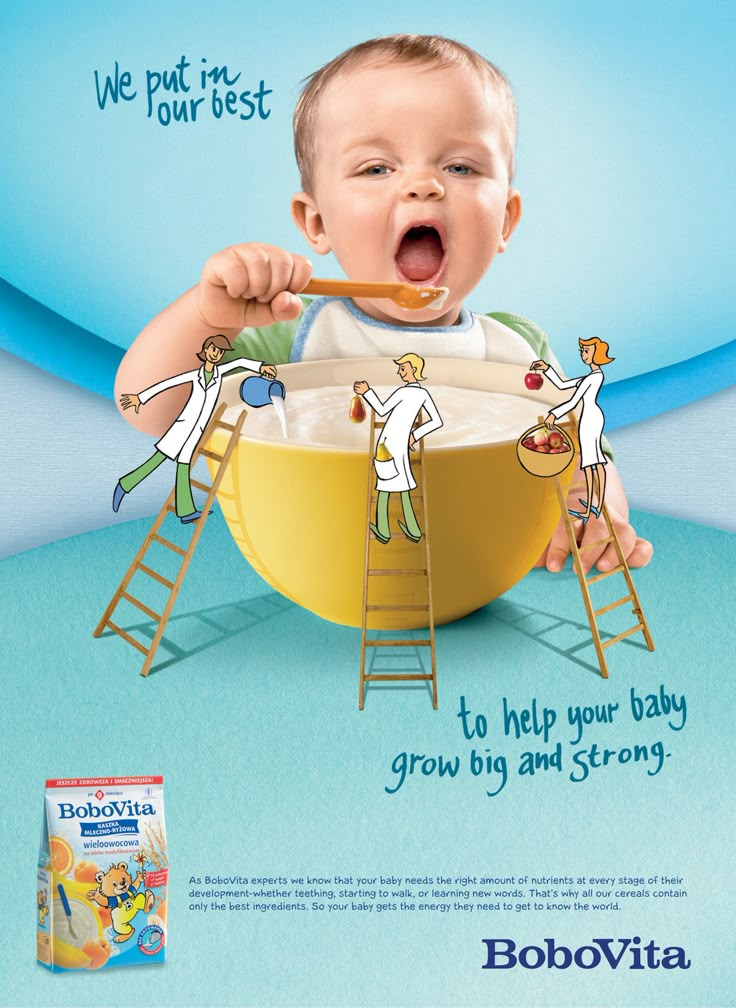
- Following successful sign in, you will be returned to Oxford Academic.
If your institution is not listed or you cannot sign in to your institution’s website, please contact your librarian or administrator.
Sign in with a library card
Enter your library card number to sign in. If you cannot sign in, please contact your librarian.
Society Members
Society member access to a journal is achieved in one of the following ways:
Sign in through society site
Many societies offer single sign-on between the society website and Oxford Academic. If you see ‘Sign in through society site’ in the sign in pane within a journal:
- Click Sign in through society site.
- When on the society site, please use the credentials provided by that society. Do not use an Oxford Academic personal account.

- Following successful sign in, you will be returned to Oxford Academic.
If you do not have a society account or have forgotten your username or password, please contact your society.
Sign in using a personal account
Some societies use Oxford Academic personal accounts to provide access to their members. See below.
Personal account
A personal account can be used to get email alerts, save searches, purchase content, and activate subscriptions.
Some societies use Oxford Academic personal accounts to provide access to their members.
Viewing your signed in accounts
Click the account icon in the top right to:
- View your signed in personal account and access account management features.
- View the institutional accounts that are providing access.

Signed in but can't access content
Oxford Academic is home to a wide variety of products. The institutional subscription may not cover the content that you are trying to access. If you believe you should have access to that content, please contact your librarian.
Institutional account management
For librarians and administrators, your personal account also provides access to institutional account management. Here you will find options to view and activate subscriptions, manage institutional settings and access options, access usage statistics, and more.
Purchase
Our books are available by subscription or purchase to libraries and institutions.
Purchasing information
Advertisement
Advertisement
90,000 as a medicine called "baby formula" has become a daily meal for children in America.
I've been thinking for quite some time about collecting all my thoughts on artificial baby food in one article, but I can't get to that work yet! There are several reasons why I put off writing this article, one of them is that this topic is incredibly broad! Actually, while I was writing this post, I realized that I want to break this topic into two parts.
The first part (namely this article) will tell about the history of the emergence and development of artificial formulas for baby food. The second part will compare the nutritional composition of infant formula and breast milk, and look more closely at the risks and benefits of formula-only feeding. nine0003
It is important to note at the outset of this story that it is not the intention of this material to portray infant formula in an unfavorable light.
Our generation is blessed to live in an age when children no longer die of malnutrition and malnutrition if their mother cannot breastfeed. As an emergency measure, artificial baby food is and always will be literally the only way to save children's lives, with no other options available . But feeding a baby exclusively with formula clearly has its serious drawbacks, and I really hope that by reading this article you will understand why formula feeding was NEVER intended for daily feeding of babies, except in dire emergencies. nine0003
As an emergency measure, artificial baby food is and always will be literally the only way to save children's lives, with no other options available . But feeding a baby exclusively with formula clearly has its serious drawbacks, and I really hope that by reading this article you will understand why formula feeding was NEVER intended for daily feeding of babies, except in dire emergencies. nine0003
Young children LIFELY need "living" food, which is human breast milk. Breast milk contains living cells, hormones, active enzymes, antibodies and at least 400 other unique components. This is a dynamic substance that provides the child with active immunity and protection against diseases every time he eats. And, compared to such miraculous breast milk, artificial milk sold as infant formula is little better than ordinary fast food. nine0008
Infant formula is the only commercially manufactured food in the world that is recommended for consumption within a few months of life. That being said, it is well known to all that no human being will remain healthy and physically prosperous on a diet of highly processed and artificial foods. In my next blog post, I'll outline the nutritional comparison between breast milk and formula, but for now, let's take a closer look at the history of infant formula. nine0003
That being said, it is well known to all that no human being will remain healthy and physically prosperous on a diet of highly processed and artificial foods. In my next blog post, I'll outline the nutritional comparison between breast milk and formula, but for now, let's take a closer look at the history of infant formula. nine0003
THE HISTORY OF CHILDREN'S NUTRITION
It has only been 60 years or so since the bottle feeding culture began to encourage mothers to give their babies highly processed foods from birth . Not only do women not face the choice of "breast or bottle," they don't even want to have that choice! But this is until recently, in historical terms.
Infant formula was never intended to be consumed on such a widespread basis as it is today. nine0003
Fig 1.
1800 and earlier - the time of wet nurses.
Throughout the history of mankind, if a woman was unable to produce milk for her child, or if the mother died, leaving an orphan to be fed, then the baby was found a nurse - a woman who fed someone else's child with her milk.
The practice of wet nurses was widespread before the introduction of bottle feeding and the introduction of artificial formula. The first mention of wet nurses is found as early as 2000 BC, and the practice of feeding children by wet nurses was widespread until the 20th century. nine0007 If a nurse could not be found, then the child was doomed to starvation or a constant lack of nutrients and vitamins, as he was fed with the milk of farm animals using a special baby bottle. The lack of human milk for a child born before the 1800s was literally a matter of life and death.
Rice 2. (Food for infants)
1845-1846 - Invention of the rubber teat and baby bottle. nine0008
Experience shows that baby bottles and nipples have been used by people since ancient times, they were made from improvised means, trying to create something similar to a mother's nipple. Vessels of various shapes and sizes have been found dating back thousands of years BC. Clay feeding bottles with protruding nipple spouts dating back to 2000 BC have been found in burial sites of newborn babies. These roughly crafted feeding bottles, and of course the problems with cleaning them, were described by observers throughout the Roman Empire, the Middle Ages, and the Renaissance. nine0003
Clay feeding bottles with protruding nipple spouts dating back to 2000 BC have been found in burial sites of newborn babies. These roughly crafted feeding bottles, and of course the problems with cleaning them, were described by observers throughout the Roman Empire, the Middle Ages, and the Renaissance. nine0003
But it wasn't until 1845 that Elia Pratt invented and patented the Indian rubber nipple, which became a truly functional and successful substitute for the female nipple. When it was discovered that orphaned babies could easily suck on these new rubber nipples, which plausibly mimicked a woman's breasts, the problem of getting food for orphaned babies was solved. And now attention quickly shifted to the problem of finding food itself, which no longer entailed so many child deaths. nine0003
As early as 1846, scientists and nutritionists identified medical problems regarding baby food, and infant mortality was already associated predominantly with bottle feeding.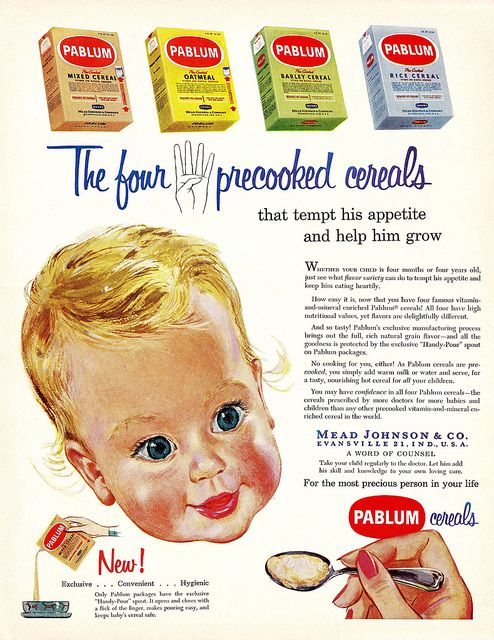 The development of the world's first special infant formula for feeding has begun.
The development of the world's first special infant formula for feeding has begun.
Rice 3. (Mom's Treasure)
Period 1867-1888 - the first infant formula was invented.
In 1867, Justus von Liebig invented the first commercially available infant formula. Liebig's Instant Baby Food was produced and marketed in London by Liebig's Registered Condensed Milk Company. Liebig himself did not accept the obvious fact that mother's milk is the ideal food for an infant, and claimed that he had succeeded in developing a substance whose chemical composition was "virtually identical to that of mother's milk." nine0003
The success of this product quickly stimulated the growth of competitors in the field, such as Mellin's Baby Food, Ridge's Baby Food and Nestlé Milk. By 1883, there were already 27 patented baby food brands on the market.
However, infant formula was still rightly regarded only as a supplementary food for infants who, if this type of nutrition were not available, would starve. These mixtures led to obesity in children, but at the same time they lacked valuable nutrients, such as proteins, vitamins and minerals. According to an article in The Boston Weekly, April 11, 1880, “It is the duty of every mother, and of those who have the great and delicate responsibility of feeding their children by means of artificial nourishment, to continually look for the best artificial nourishment.0007 to save infant life .”
These mixtures led to obesity in children, but at the same time they lacked valuable nutrients, such as proteins, vitamins and minerals. According to an article in The Boston Weekly, April 11, 1880, “It is the duty of every mother, and of those who have the great and delicate responsibility of feeding their children by means of artificial nourishment, to continually look for the best artificial nourishment.0007 to save infant life .”
Fig 4. ( Mixtures Nestle for happy children . Nestle babies have pink cheeks, sparkling eyes, as well as their brain, muscles and tendons develop so that in the future these babies grow into useful men for society and women
Nine out of ten problems with naughty and irritable babies can be directly linked to inappropriate food Let us provide you with a free half pound pack of Nestlé Food for your reference and our Mom's Book, which is full of useful tips on care for infants and young children Contact us today. )
)
The period from 1890 to 1907 - the emergence of homemade formulas for baby food.
While infant formula has had a significant impact on reducing infant mortality, medical luminaries have continued to spread the word to the public that formula is not a panacea for all childhood illnesses. Despite the advertising claims that formulas are "virtually identical to mother's milk", many infants still die from malnutrition, scurvy, rickets and bacterial infections. nine0008
And as physicians became increasingly concerned about the quality of commercially produced infant formula and found that infant formula was not light enough for infants to digest, various medical guidelines began to circulate, such as Dr. Thomas Morgan Rotch's "percentage method" (published in 1890). Such recommendations became widespread and popular by 1907. According to this formula, parents were advised to mix cow's milk, water, cream and sugar or honey in a certain ratio in order to obtain a nutritional composition close to human milk. nine0003
nine0003
These homemade formulas were less expensive and people deeply believed that they were healthier.
However, the children who received these foods also continued to suffer from diet-related illnesses - scurvy, rickets and bacterial infections - that they could not bear.
Figure 5. ( No doctor will find a better powdered milk for feeding babies than this. better than White House infant formula.
Doctors know that White House infant formula contains the nutrients of fresh milk and pure crystalline vitamin D3 - an important "sunshine" vitamin - which has been generously added to the formula for the proper development of the child's bones and teeth. What's more, White House formulas are carefully homogenized for easier digestion by babies and are sterilized in safe, airtight containers. These manufacturing features are approved by the American Medical Association Food and Nutrition Board. nine0003
Indeed, there is no better powdered milk for feeding children than White House. And no nutritionist can recommend the best powdered milk for cooking, baking, coffee and other drinks, or much more.)
And no nutritionist can recommend the best powdered milk for cooking, baking, coffee and other drinks, or much more.)
Period 1908 to 1950 - Powdered milk based infant formulas took over America in a wave.
In the 1910s, powdered milk formula became widely available at low prices. Inspired by the success, dairy corporations began funding clinical trials that proved that formula-fed babies thrive “as if they were fed real breast milk.” nine0007 This argument for mixtures is not supported by modern research, but at that time they made a lot of money, based on deception.
Figure 6. (“My doctor recommends Carnation!”)
families. And as more women embraced the fad and relied on the bottle to feed their children, the more “instant baby food” seemed magical to the public. nine0007 By the late 1930s, the use of powdered milk formula in the United States outpaced all other commercially available infant formula, and by 1950, half of the children in the United States were being raised on powdered formula.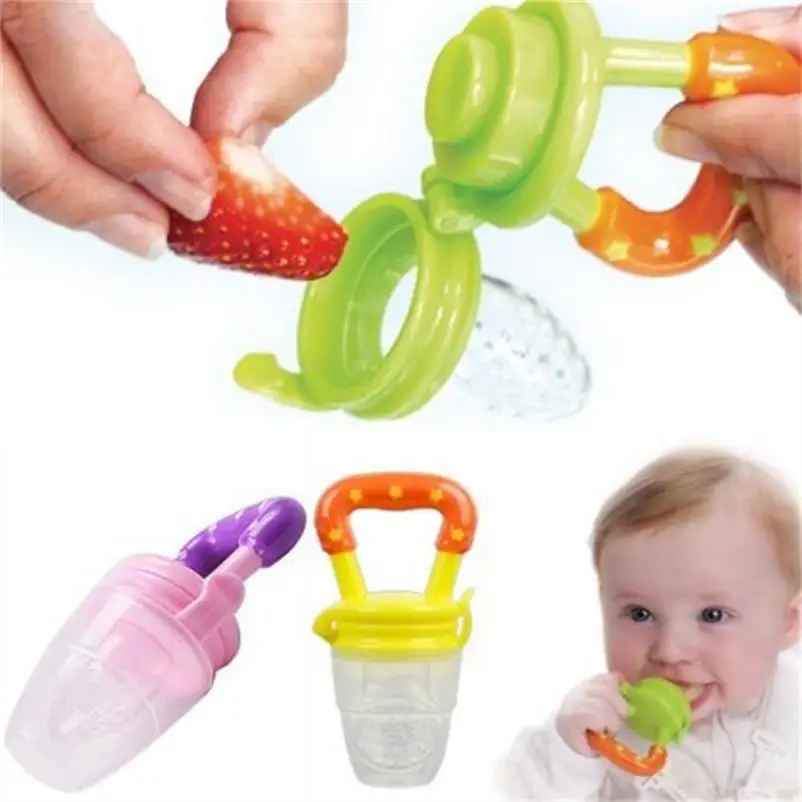
Figure 7.
1951 - 1970 - Feeding formula manufacturers begin to use aggressive advertising campaigns to boost sales.
In the late 1950s, Alfred Bosworth published the word "similac" reformulated and shortened from "similartolactation" ("like breastfeeding"), and Meade Johnson published the word "Enfamil" (from the combined "infant" and "meal" , i.e. "children's food"). Several other formulas were released over the next decade and, thanks to extremely aggressive advertising campaigns with exaggerated health benefits and slogans about the ideal nutritional composition, powdered infant formula began to seriously compete with formulas based on milk powder. nine0007 Infant formula became widely popular when breastfeeding began to be seen in society as "unkempt" and "dirty".
In 1959, advertising campaigns in hospitals and pediatric departments of hospitals proliferated with inexpensive trial formulas and by the early 1960s in the United States commercial formulas were already used more widely than formulas based on milk powder, which eventually disappeared altogether. off the market in the 1970s.
off the market in the 1970s.
Figure 8. (When the milk is at the expense of the state - it must be the best)
1971-1996 - child mortality and morbidity associated with the use of formula for feeding attract public attention.
By the early 1970s, more than 75% of American children were fed formula, almost all of which was commercially produced.
As birth rates declined in industrialized countries by the 1970s, infant formula manufacturers turned their advertising campaigns to non-industrialized countries. Unfortunately, poor sanitary conditions in such countries have led to a sharp increase in the death rate among infants fed with formula prepared with contaminated water. In addition, Third World women using formula to feed their babies lost their breast milk because they didn’t need it, and when formula ran out, they diluted it with three times the recommended amount of water in order to stretch the available quantity over a long period of time. This has led to mass child deaths from malnutrition. nine0003
This has led to mass child deaths from malnutrition. nine0003
UNICEF estimates that formula-fed children living in disease-ridden and unhygienic conditions are 25 times more likely to die from diarrhea and 4 times more likely to die from pneumonia than children in the same conditions but breastfed.
After it became known that 1.2 million infant deaths in third world countries were clearly the fault of formula feeding, there was a wave of protests around the world - the most famous was the boycott announced by Nestlé in 1977, calling for an end to unethical advertising campaigns for infant formula.
Unethical marketing of infant formula, the latest extreme of which is touting formula as a "healthy" baby food choice, eventually led to the formation of the International Code of Marketing of Breast-milk Substitutes. This is the international health policy framework for the promotion of breastfeeding, approved by the WHO World Health Assembly at 1981 year.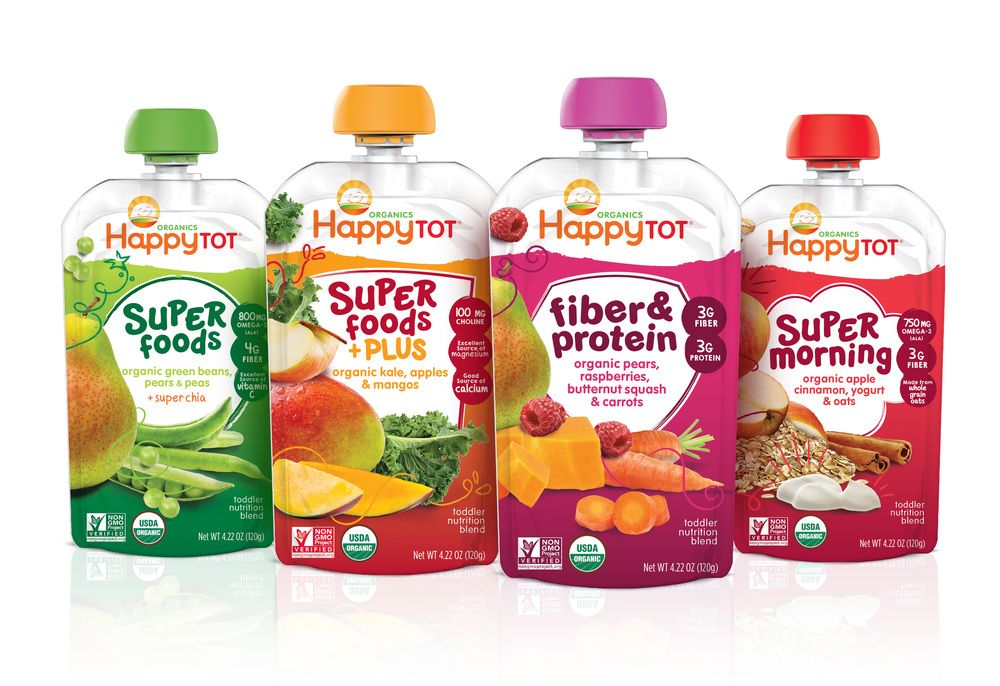 This Code was developed as a global public health strategy and recommends limiting the marketing of infant formula to encourage women to breastfeed their babies and using breast milk substitutes judiciously and only when absolutely necessary.
This Code was developed as a global public health strategy and recommends limiting the marketing of infant formula to encourage women to breastfeed their babies and using breast milk substitutes judiciously and only when absolutely necessary.
Figure 9. (Profits are rising...and infant mortality too. Nestlé boycott)
1997 and present - breast or bottle. nine0008
Despite the best efforts of all public awareness campaigns, fast food culture in America is still widespread and involves the use of infant formula in infant nutrition.
In addition to the widespread commercial brands, generic (or proprietary) brands of infant formula appeared in the United States in 1997, the first being PBMProducts. These private label blends are sold at many major grocery and drug store chains such as Wal-Mart, Target, and Walgreens. nine0003
However, as more short- or long-term health risks from exclusive formula feeding are now being identified in research, leading health organizations (WHO, Centers for Disease Control and Prevention and the Department of Health and Human Services, as well as non-profit organizations organizations such as La Leche League) are trying to reduce the use of infant formula and increase the duration of feeding from birth to 12-24 months of age by disseminating information through various public health campaigns. nine0003
nine0003
By now, the problem of choosing between breastfeeding or bottle feeding is complicated by the opposition between the opinions of modern medicine, basic nutrition and greedy marketing in fast food culture. Today, the global market for infant formula, a product that from its inception to the present has been an emergency baby food, is estimated to be worth about $11.5 billion.
US data clearly show that infants growing up in poverty and poor sanitation are still getting sick and dying because they are fed exclusively formula too early. nine0007 Research shows that formula-fed babies tend to be more likely to develop atopy, diabetes, and childhood obesity, all just because bottle-feeding is faster.
Figure 10. (Breastfeeding is the best)
Brief facts about modern infant formula.
- There is still no single formula for infant formula. nine0008 The process of production of artificial formulas for feeding from the very beginning of its history is accompanied by trial and error.
- The ingredients in infant formula are a mystery in most cases. Only the manufacturers themselves know what they put in their product, but they will never say what is there and, moreover, they are not legally obliged to do so, thanks to the right of "trade secrets".
- Certain infant formulas are clearly known to contain toxic and hazardous ingredients . Like many other baby food products on the market, some commercial formulas contain frightening ingredients, from sweeteners like corn syrup to preservatives like copper sulfide, which is a toxic pesticide.
- Within reasonable limits, manufacturers can put whatever they see fit into the mixture. And in fact the recipe for the same product can vary from batch to batch, depending on the price and availability of the ingredients. While we admit that the composition of infant formula is carefully regulated, no one requires honesty from manufacturers. For example, they must not register specific components of any batch or trademark with any authority.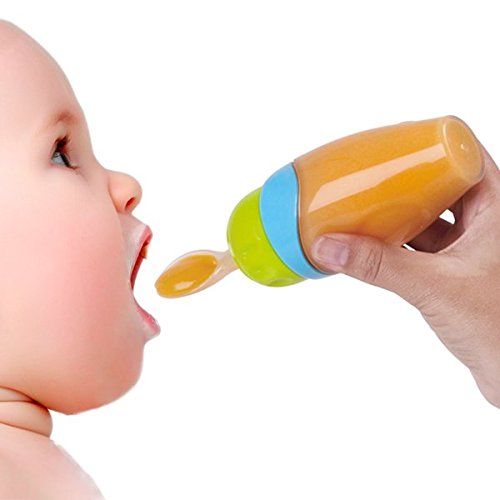 nine0003
nine0003
- Vitamins and valuable trace elements are added to the mixture, but not always in their easily digestible form. This means that the claim that "formula is nutritionally complete" may be technically true, but in any case, they add a load to children's organs and body systems (and NONE of infant formula contains live enzymes and does not have immune-boosting properties, unlike live breast milk!)
- Many infant formulas are over-sweetened. nine0008 While most infant formulas do not contain sugar in the form of sucrose, they do contain high amounts of other types of sugars such as lactose (milk sugar), fructose (fruit sugar), glucose (also known as dextrose, a simple sugar, found in plants) and maltodextrose (maltose sugar). Due to flaws in the legislation, all of these ingredients may be described as "sucrose free" in the formula.
- The Food and Drug Administration found that more than 90% mixtures contain random contaminants.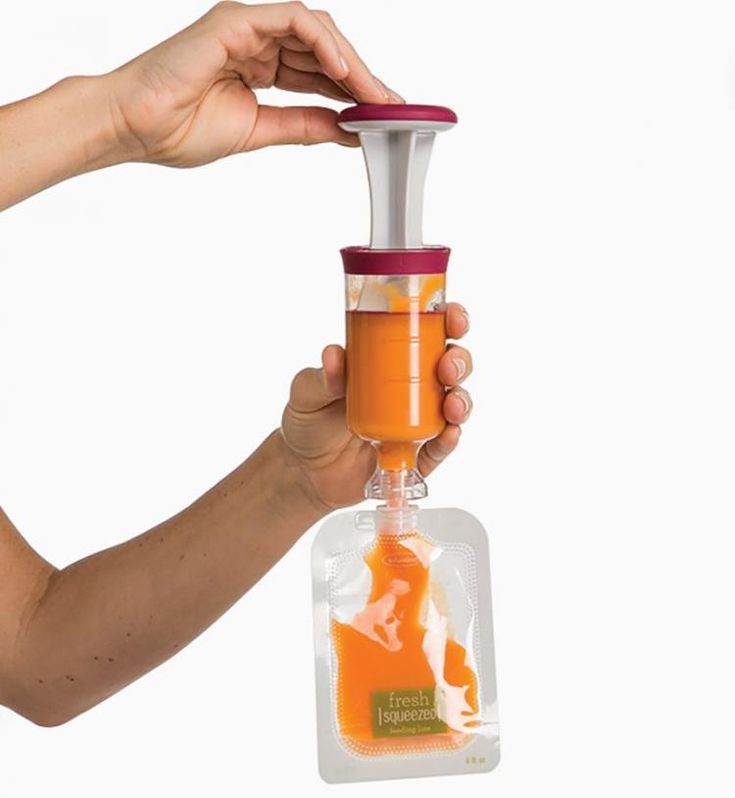 Contaminants that enter the mixture during the manufacturing process are found in the form of metals (aluminum, cadmium, lead, and others). Bacterial and trace amounts of melamine, a toxic kidney-damaging chemical, are also persistent contaminants in mixtures.
Contaminants that enter the mixture during the manufacturing process are found in the form of metals (aluminum, cadmium, lead, and others). Bacterial and trace amounts of melamine, a toxic kidney-damaging chemical, are also persistent contaminants in mixtures.
What we've learned from the history of infant formula.
Because mixtures are not - and never have been! - Nutrientally complete, and because they do not contain the components of breast milk that support the child's immunity, it has been found that the use of formula by the child day after day has a devastating effect on his health in the short and long term. nine0008
The World Health Organization warns that "lack of breast milk - and in particular the lack of it in the first six months of an infant's life - is a significant factor in increasing infant morbidity and even mortality."
When it comes time to choose how to feed your baby, you need to remember that there is not a single medical indication in favor of choosing inadequate artificial nutrition. Research in this area confirms that breastfeeding prevents adverse health conditions, while formula feeding is associated with the development of these conditions. These data confirm that breastfeeding is and always will be the best way to feed babies and the safest way to feed children. nine0003
Research in this area confirms that breastfeeding prevents adverse health conditions, while formula feeding is associated with the development of these conditions. These data confirm that breastfeeding is and always will be the best way to feed babies and the safest way to feed children. nine0003
Thank you for reading this huge post! And, you just believe me, I have the second part! Stay tuned in the coming weeks as I go into more detail about the benefits of breastfeeding and compare the nutritional profiles of breastfeeding and IV.
(To be continued)
Gingi Freeman
babies-america/
Translated by Julia Sinelnikova, www.vk.com/julia_sinel
Patents - Research Institute of Baby Nutrition of the Russian Academy of Agricultural Sciences
Country - Russia (RU), number of patents - 27, received - 2000-2012, team of authors - 42 people.
- A23 - Food or foodstuffs; their processing, not included in other classes
- A61 - Medicine and veterinary medicine; hygiene
- G01 – Measurement
Ref. 0310 Lipatov N.N. 0310 Lipatov N.N. | 12 | |
|---|---|---|
| 2 | Sinko T.I. | 12 |
| 3 | Les G.M. | 11 |
| 4 | Khovanova I.V. | 11 |
| 5 | Antipova T.A. | 10 |
| 6 | Simonenko Sergei Vladimirovich | 5 |
| 8 | Stolyarova A.V. | 4 |
| 9 | Ermilova V.A. | 4 |
| 10 | Shcherbakova E.G. | 4 |
-
Low-lactose non-fat dairy product for gerodietetic nutrition
The invention relates to the dairy industry. Low-lactose low-fat dairy product for gerodietary nutrition contains the following initial components, wt.%: skimmed milk 9
10.10.2012 A23C23/00 Patent No. 2501285
-
dairy industry. The low-lactose dairy product contains the following initial components, wt %: skimmed milk 84.
 0-91.54, cream 4.22-8.71, whey protein concentrate 0.92-1.09, "Maxilact" enzyme...
0-91.54, cream 4.22-8.71, whey protein concentrate 0.92-1.09, "Maxilact" enzyme... 10.10.2012 A23C23/00 Patent No. 2504205
-
Sterilized baby milk product based on combined milk for children over one year old
The invention relates to the dairy industry. Sterilized dairy product for baby food for children over one year old includes cow's milk with a fat content of 2.3%, goat's milk with a fat content of 2.0%, mare's milk with a fat content of 2.0%, corn oil, butter ...
05/21/2012 A23C9 /13 Patent No. 2495581
-
Sterilized dairy product based on goat's milk for nutrition of pregnant and lactating women
The invention relates to the dairy industry. Sterilized dairy product based on goat's milk for nutrition of pregnant and lactating women contains as initial ingredients, wt %: normalized goat's milk with a fat content of 2.5% or 2.45%...
A23C9/20 Patent No.
 2440767
2440767 -
Sterilized milk product "sports"
The invention relates to the dairy industry. The sterilized dairy product for school sports nutrition contains as initial components, wt %: skimmed milk powder - 10.0-12.0, whey protein concentrate - 1.83-2.85,...
19.10.2010 A23C23/00, A23C9/20 Patent No. 2440003
-
Pasteurized dairy product based on goat's milk for feeding lactating women
The invention relates to the dairy industry. Dairy product based on goat's milk for the nutrition of lactating women, contains normalized goat's milk with a fat content of 3.75%, oligofructose, vitamin C, vitamin PP, vitamin B1, vitamin B3, vitamin B6,...
11/18/2009 A23C9/152 Patent No. 2415596
-
Pasteurized dairy product based on goat milk for feeding pregnant and lactating women
The invention relates to the dairy industry.
 Pasteurized dairy product based on goat's milk for the nutrition of pregnant and lactating women contains as initial components, wt.%: normalized goat's milk with a fat content of 3.7%,.../20Patent No. 2417613
Pasteurized dairy product based on goat's milk for the nutrition of pregnant and lactating women contains as initial components, wt.%: normalized goat's milk with a fat content of 3.7%,.../20Patent No. 2417613 -
Composition for the production of a sterilized dairy product for baby food based on goat's milk from birth to five months
The invention relates to the dairy industry and can be used in the production of sterilized products for feeding children from birth to five months. The composition contains whole goat milk, cream, whey proteins, corn oil,...
-
Composition for the production of a sterilized dairy product for baby food based on goat's milk from five months to one year
The invention relates to the dairy industry and can be used in the production of sterilized products for feeding children from birth to five months. The composition contains whole goat's milk, cream, corn oil, soybean oil, butter.
 ..
.. 0290
-
"Lizolakt" agent, potentiating the antitumor activity of cytotoxic drugs
FIELD: medicine and food industry. The invention relates to a means that potentiates...5 Publications
-
International Copyrights
Any rights in works must be international in order to enter the world market. A similar need to strictly limit the territories of the rights of creators arose in the distant century before last. Just in...
06/18/2016 read in full...
-
Patent for an industrial design model
Any result of human activity must be protected by law, and if in material terms everything is much simpler, then intellectual property must first be registered in order to be able to defend their rights to it later. Protective act...
14.06.2016 read in full...
-
Copyright
At all times, people tried to protect their property and non-property rights.

-








